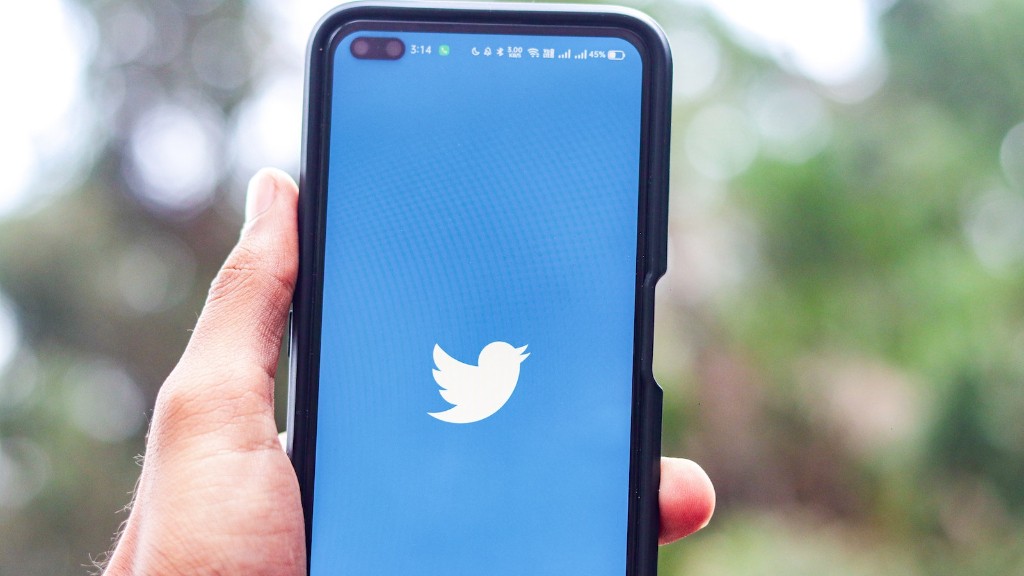A generic marketing strategy is a strategic approach that can be used by businesses to market a wide range of products and services. This type of strategy is not industry specific and can be adapted to different industries. The main goal of a generic marketing strategy is to identify the needs and wants of customers and then create a marketing mix that will meet those needs.
A generic marketing strategy refers to the overall game plan that a company uses to market its products or services. This includes the company’s overall marketing objectives, target market, positioning, and messaging. A generic marketing strategy does not include any specifics about how the marketing objectives will be achieved. Many factors go into developing a successful marketing strategy, and there is no one-size-fits-all approach. The best marketing strategies are tailored to the unique needs of the company and its products or services.
What are generic strategies in marketing?
Porter’s Generic Strategies model suggests that there are three basic strategic options available to organizations for gaining competitive advantage. These are: Cost Leadership, Differentiation and Focus.
Cost Leadership is achieved by being the lowest cost producer in the industry. In order to achieve this, organizations need to carefully control their costs and find ways to produce their products or services more efficiently than their competitors.
Differentiation is achieved by offering products or services that are unique and not easily replicated by competitors. In order to achieve this, organizations need to carefully develop their products or services so that they offer something unique that customers value.
Focus is achieved by targeting a specific niche market and becoming the leader in that market. In order to achieve this, organizations need to carefully research their target market and develop their products or services to meet the specific needs of that market.
Porter’s Generic Strategies are four basic strategies that can be used in order to create a competitive advantage. The four strategies are: cost leadership, differentiation, cost focus, and differentiation focus. Each of these strategies has its own advantages and disadvantages, and so it is important to choose the strategy that is best suited to the company’s situation.
Cost Leadership Strategy: The cost leadership strategy is all about being the low-cost producer in the industry. This can be achieved through economies of scale, efficient production processes, and a tight control over costs. The advantages of this strategy are that it can help to make a company more profitable and it can also help to increase market share. The disadvantages of this strategy are that it can be difficult to sustain over the long-term, and there is also the risk that other companies will copy the company’s cost-cutting measures.
Differentiation Strategy: The differentiation strategy is all about creating a unique selling proposition for the company’s products or services. This can be achieved through innovation, superior quality, or unique features. The advantages of this strategy are that it can help to make a company more profitable and it can also help to increase market share. The disadvantages of this strategy are that it can be difficult to
What are Porter’s 4 generic strategies
Porter’s Generic Strategies is a group of four categories of competitive strategy: Differentiation, Cost Leadership, Focus (Cost), Focus (Differentiation).
Differentiation is a strategy where a company seeks to be unique in its industry, offering a product or service that is different from its competitors.
Cost Leadership is a strategy where a company seeks to be the low-cost leader in its industry, offering a product or service at a lower price than its competitors.
Focus (Cost) is a strategy where a company focuses on a specific market segment and seeks to be the low-cost leader in that segment.
Focus (Differentiation) is a strategy where a company focuses on a specific market segment and seeks to be unique in that segment.
There are three main types of generic strategies that firms can use to achieve a competitive advantage and outperform their rivals in an industry. The first is cost leadership, where a firm seeks to become the low-cost producer in an industry. The second is differentiation, where a firm seeks to offer a unique and differentiated product or service. The third is focus, where a firm seeks to serve a specific niche market or segment. Each of these strategies has its own advantages and disadvantages, and firms must carefully choose the right strategy for their own unique circumstances.
What are examples of generic strategies?
The four business-level strategies that can be adopted by firms are: cost leadership, differentiation, focused cost leadership, and focused differentiation. In order to be successful, firms need to choose the right strategy that fits their unique circumstances and they need to be able to execute it well.
The four Ps are product, price, place, and promotion. They are an example of a “marketing mix,” or the combined tools and methodologies used by marketers to achieve their marketing objectives.
Product: This refers to the physical product or service that the company is offering. It is important to consider the features and benefits of the product when determining the right mix of products to offer.
Price: This is the amount that the customer will pay for the product. pricing strategies can be used to increase or decrease demand for a product.
Place: This is the location where the product will be sold. It is important to consider things like distribution channels and target markets when determining the right place for a product.
Promotion: This is the method used to communicate the benefits of the product to the target market. common promotional methods include advertising, public relations, and direct marketing.
What is Coca Cola’s generic strategy?
Coca-Cola has been a dominant player in the beverage industry for many years. The company has continually used the differentiation competition strategy to improve its core competitiveness, brand awareness, consumer loyalty, and value awareness. This has allowed Coca-Cola to occupy a dominant position in the industry. The company is constantly innovating and introducing new products to keep consumers loyal and engaged. In addition, Coca-Cola heavily invests in marketing and advertising to ensure that its products are top of mind for consumers.
The 5 types of generic strategies are;
1. Cost Leadership Strategy
2. Differentiation Strategy
3. Broad Differentiation Strategy
4. Focus Strategy
5. Best Cost Strategy
What are generic strategies used for
Porter’s generic competitive strategies are a set of tools that can be used to manage, grow and improve the profitability of a business by creating a sustainable competitive advantage. The three main strategies outlined by Porter are cost leadership, differentiation and focus. By understanding and utilising these strategies, businesses can improve their chances of success in a highly competitive marketplace.
Porter’s Five Forces helps strategists understand the profitability of an industry and the forces that shape it. The framework is made up of five forces: Threat of new entrants, Bargaining power of buyers, Bargaining power of suppliers, Threat of new substitutes, and Competitive rivalry. Each of these forces affects the profitability of an industry and the choices that strategists can make to improve it.
What are the 3 generic strategies and how do they differ?
Generic strategies refer to the ways in which a company can compete in the market. Michael Porter developed three generic strategies that a company can use to gain competitive advantage. These three are: cost leadership, differentiation, and focus.
Cost leadership is when a company seeks to be the low cost producer in its industry. Differentiation is when a company seeks to create a unique product or service that is not offered by its competitors. Focus is when a company seeks to specialize in a particular market or niche.
Porter’s generic strategies are important because they offer companies a way to create a unique selling proposition. Without a unique selling proposition, companies would be competing on price alone and would have a difficult time differentiating themselves from their competitors.
Walmart Inc is a low-cost producer of retail services which enables the company to compete based on low selling prices. The company’s focus on cost leadership is a key element of its generic competitive strategy, as outlined by Michael Porter’s model. By offering goods and services at a lower cost than its competitors, Walmart is able to generate revenue and profit from a larger market share.
How effective are generic strategies
Generic strategies that were developed by Michael Porter are considered effective strategies. This is because these strategies allow the firm to choose and pursue the required strategy to position its firm in the industry in an appropriate manner. Positioning of the firm in the industry is a key success factor for any organization and these strategies help the firm to achieve the desired position.
CVS’s generic strategy of focusing on cost effectiveness and competitive advantages has helped the company become a leading pharmacy benefit manager (PBM). The company’s focus on providing value to its stakeholders through its innovative PBM business model has allowed it to maintain a strong competitive position.
How many types of generic strategies are there?
A company can choose to pursue a competitive advantage in one of three or four ways. The first is to offer lower prices than its competitors. The second is to differentiate itself along dimensions valued by customers. The third is to focus on a particular market niche. The fourth is to pursue a combination of these strategies.
Apple’s generic strategy of broad differentiation contributes to the company’s success in the information technology industry. Key features that differentiate Apple from competitors include its innovative and user-friendly products, strong branding, and seamless customer experience. These elements allow Apple to charge higher prices for its products, which in turn contributes to the company’s high profitability.
What generic strategy does Amazon use
Amazon’s cost leadership strategy is all about minimizing operational costs in order to create a competitive advantage. The company does this by using advanced technologies that allow for maximum efficiency. For example, Amazon.com uses cutting-edge computing and networking technologies to minimize costs and keep their operations running smoothly. This allows them to pass on the savings to their customers in the form of lower prices, which makes them more competitive.
There are a variety of marketing strategies that companies can use to gain a competitive edge in the marketplace. The three main strategies are:
1. Cost domination: Companies pursue this strategy by becoming the low-cost producer in their industry. This allows them to undercut their competitors on price and still make a profit.
2. Differentiation: Companies pursuing this strategy focus on creating a unique product or service that is not easily replicated by competitors. This can be done through innovation, superior quality, or providing unique features.
3. Focus: Companies pursuing this strategy focus on a specific niche market or geographic region. This allows them to better serve the needs of their target customers and be the go-to company in their industry.
Warp Up
A generic marketing strategy refers to a high-level plan that can be applied to any product or service. The goal of a generic marketing strategy is to build a sustainable competitive advantage by carefully targeting a specific market and creating a unique value proposition. This strategy typically involves creating a unique brand identity, developing a strong distribution network, and implementing aggressive marketing and pricing campaigns.
A generic marketing strategy is a method used by businesses to market their products or services to a target audience. This type of marketing strategy involves creating a marketing plan that is tailored to the specific needs of the target market. businesses use various marketing tools and techniques to reach their target markets, and the most effective marketing strategy will vary depending on the products or services being marketed.





